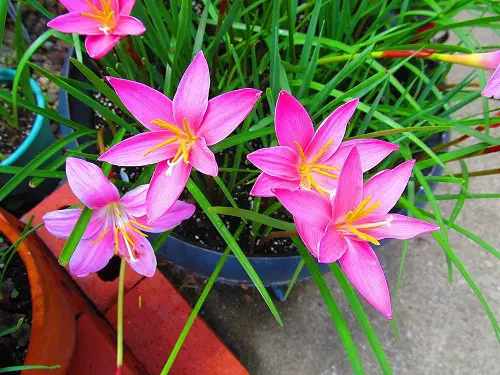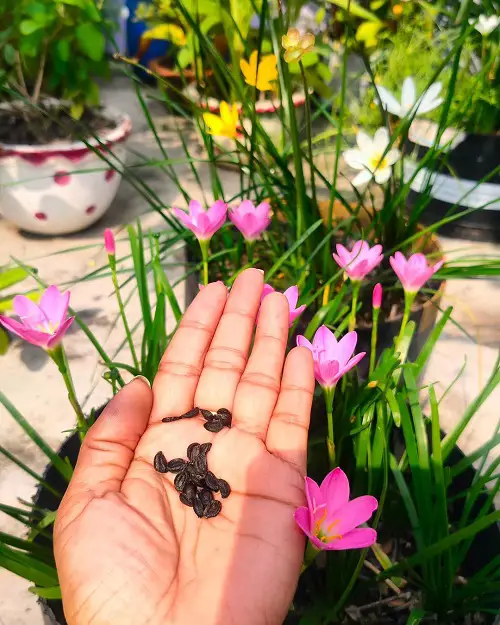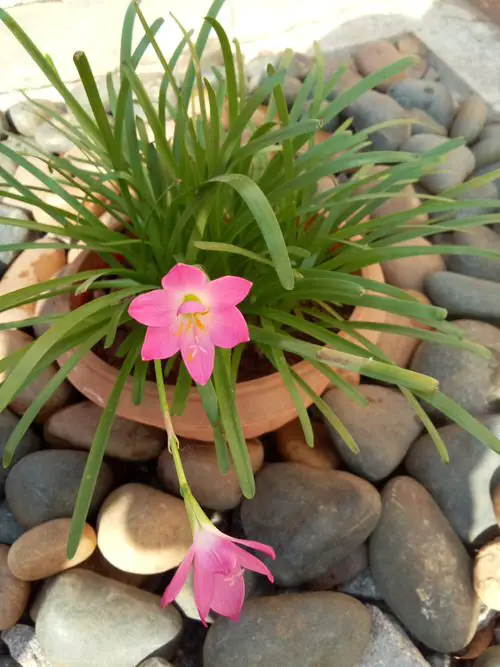What does the ‘flower of the rain’ symbolize? Let’s explore the meaning of Rain Lily and Why You Should Grow It!

Rain Lily is the unexpected visitor you didn’t know you needed! Packed with symbolism and cultural significance, let’s uncover the rain lily’s meaning and explore why you should grow it at home!
What is Rain Lily?
Rain lily is a perennial flower belonging to the Amaryllidaceae family, which includes famous blooms like daffodils, snowdrops, amaryllis, and many more that grow from bulbs. Producing a sweet floral scent, the funnel-shaped flowers with six prominent petals appear in many hues.
It has unassuming green grass-like foliage that suddenly bursts into pink, lilac, yellow, white, and peach blooms a few days after a storm, instantly juicing up your garden. Also known as zephyr lilies or fairy lilies, it is native to the Americas but adapts easily and can grow in a range of regions, climates, and settings.
First, let’s unravel the metaphysical mysteries behind the rain lily, its spiritual meaning, and its cultural symbolism before anything.
Rain Lily Meaning

Like a fluke visit from close friends, flushes of fragrant blossoms unexpectedly pop up after a rainy spell, universally symbolizing renewal, rebirth, and fresh starts. This stunning bloom has always symbolized beliefs that differ from culture to culture.
It suggests resilience and hope and is gifted in versatile situations. It can help someone cope with grief, loss, and despair, wishing them luck and inspiring hope for a better future.
A bouquet of rain lilies ushers in joyous beginnings at weddings and celebrations.
In Feng Shui, the rain lily symbolizes flow, fluidity, and seamless change, fortified by its water element, adaptability, and strength. And in Chinese folklore, this flower bridges mortals with the divine.
Across cultures and rituals, different colors signify different emotions. White blooms represent innocence, resurrection, and a fresh start, while pink shows deep affection and love. Orange blooms indicate confidence and individuality, and yellow for serendipity.
If you love flowers with symbolism and mystery, check out our article on the enigmatic cosmos flower!
Why Should You Grow Rain Lilies?
With 70 species under its belt, rain lily easily naturalizes in gardens and landscapes, spreading and building colonies over time. While it blooms right after rain, the plant is drought-tolerant once mature, making it suitable for growing on patios, containers, balconies, or other urban spaces.
1. They are Easy to Grow
These hardy lilies grow well without constant babysitting, making them the perfect choice for busy and lazy gardeners.
2. Pest Resistant
Rain lilies easily adapt to different conditions, including tropical climates where the chances of being infested by pests are higher! They have evolved to stand steadfast against them without using chemical insecticides and harmful pesticides.
3. Long-lasting Blooms
These plants can flower almost all year long except in chilly winters.
4. Can Grow in Limited Space
These perennials don’t need too much growing space and do well in pots and crowded gardens. While they self-seed, they aren’t invasive, disrupting native ecosystems.
5. Loved by Pollinators
Butterflies, moths, and other pretty pollinators find its blooms quite irresistible.
5. Different Ways of Showing Off
Easy to grow, resilient, and not fussy–rain lilies can be used in versatile arrangements, such as garden borders, containers, landscaping, etc. And despite your minimal effort, they will make your gardening skills look top-notch!
How to Grow Rain Lilies?

Rain lily is mainly grown from bulbs since it stores nutrients and energy, allowing the plant to survive dormant periods and revive when it’s time. This propagation method is also faster and perfect for beginners.
If you wish to grow it, choose a container that is at least six to eight inches deep but wider, as this plant loves to spread. Fill it with well-draining, slightly acidic, and organically rich potting soil. Place the bulb a couple of inches deep in the pot, ensuring there is ample space for roots to grow.
This flower needs at least six hours of full sun and regular watering—not overwatering! Water only when the topsoil is dry, or else your previous plant will rot.
Around bloom time, a gentle fertilizer rich in phosphorus may help it flourish but occasionally you can also feed it with any balanced liquid fertilizer in low strength.
Deadheading spent flowers will also ensure recurring blooms, coaxing the plant into producing new blooms versus setting seeds.
If you plant around spring, after the last frost, the foliage will appear in a few weeks and blooms in two to three months in late summer to early fall, especially after rains.
If you love rain lilies and are off to plant them in a pot in your home, check out these flower bulbs that grow well in containers!


